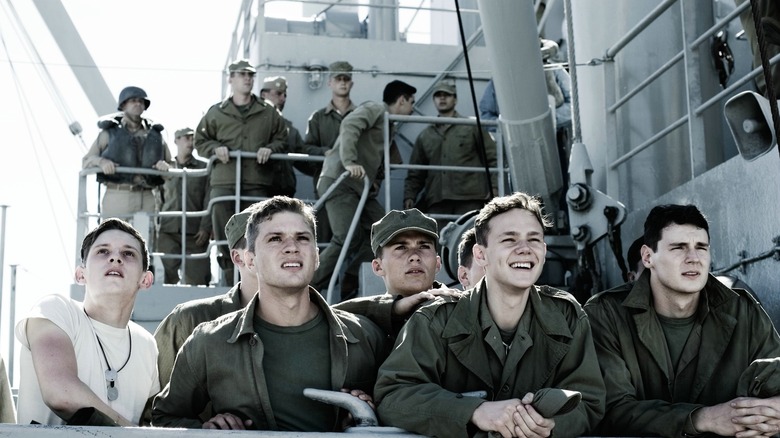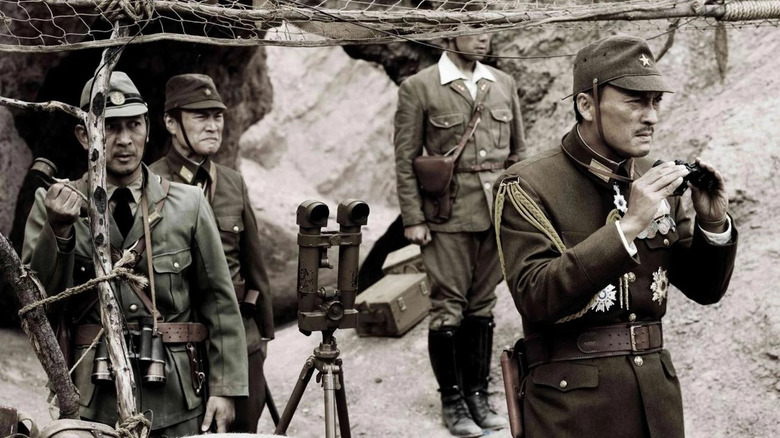[ad_1]
In 2006, director Clint Eastwood tackled a project the likes of which few other filmmakers would even dream of, developing back-to-back war films that depicted the same event but from opposite perspectives. It was a wildly ambitious idea, as war movies can be challenging in their own right and doing two within a short period of time is a tall order, but Eastwood had vision and passion that helped him make both “Flags of Our Fathers” and “Letters from Iwo Jima” powerful, haunting films.
Both “Flags of Our Fathers” and “Letters from Iwo Jima” depict the Battle of Iwo Jima, which took place in February and March of 1945 on the Japanese island of Iwo Jima and ended in an Allied victory on March 26, when a group of Marines famously raised an American flag on one of the island’s peaks. (Though there have been rumors for years that the famous photo of the Marines with the flag was faked, a National Geographic piece in 2020 testified to its authenticity.) The Battle of Iwo Jima was especially brutal, with around 7,000 US Marines and 20,000 Japanese soldiers killed, protracted out over five weeks because the Japanese had built in defenses on the island so well, making it extremely difficult to overtake.
By creating two films with opposite perspectives, Eastwood showed the futility of war in a whole new way, reminding us that we are all human and should try to avoid needless bloodshed whenever possible.
Flags of Our Fathers and Letters from Iwo Jima were two sides of the same conflict
Eastwood has had a complicated relationship with war cinema throughout his career, and though he would go on to direct much more overtly patriotic fare like the wildly successful “American Sniper,” when he made “Flags of Our Fathers” and “Letters from Iwo Jima” he was in a much more jaded frame of mind about war. With “Flags of Our Fathers,” he was set on showing the trauma of war and how it impacts soldiers long after they go home, while “Letters from Iwo Jima” was intended to show American audiences the horrors and heroism of the Japanese side of the battle. In fact, “Letters from Iwo Jima” was supposed to make audiences uncomfortable, using a muted color palette and desaturated look to highlight the misery of war.
Both films depict the soldiers involved as heroes to some degree, though patriotism is pretty far removed as Eastwood tries to make their heroism about endurance and resilience, not success in battle. What they survive in the face of unimaginable horror is what makes them heroes, not some misguided ideal about national pride or a warrior’s code. It’s something that unites both films beyond their setting; Eastwood focused on the human cost of war on both a grand and personal scale.
The back-to-back films were wildly ambitious
Eastwood filmed and released “Flags of Our Fathers” and “Letters from Iwo Jima” back-to-back, and based both upon non-fiction books. “Flags of Our Fathers” is based on the 2000 book of the same name by James Bradley and Ron Powers, which follows the six men who raised the flag over Iwo Jima as they try to return to life after the war, while “Letters from Iwo Jima” is based upon “Picture Letters from Commander in Chief” by Tadamichi Kuribayashi, which is simply a collection of letters home from a Japanese commander in the battle. Unfortunately, the films’ anti-war stances and grim stories meant that neither was all that successful at the box office, with “Letters from Iwo Jima” earning only slightly more than “Flags of Our Fathers,” which was an outright box office failure.
Thankfully, both films did better critically, with positive reviews for both and some serious awards notice for “Letters from Iwo Jima,” including a Best Picture Academy Award nomination. Both are easily among Eastwood’s best efforts as a director, though most critics and audiences consider “Letters from Iwo Jima” to be the stronger of the two pictures. It’s unlikely that anyone will try to tackle this kind of thing again anytime soon given the box office failure, and that’s a real shame, because both of these movies are vital pieces of storytelling that contribute something new to the war movie subgenre.
[ad_2]










